London Tube Fares 2024
Transport fares vary depending on when and where you travel, and on the payment method you choose.

Time of the day:
If you travel during peak hours, costs will be more expensive than during off-peak hours. Peak hours are Monday to Friday, between 6:30 am to 9:30 am, and between 4:00 pm to 7:00 pm, except on public holidays.
Ticket type:
- Paper ticket or cash ticket: Single tickets cost between £6.70 and £9.80 .
- Pay-as-you-go (PAYG) or contactless payment methods: By using an Oyster card, which is a prepaid or contactless option, you can save significant money on each journey. For example, if you use it in Zone 1, your ticket will cost less than half the price of a paper ticket. It is worth learning more about this money-saving payment option; see below for more information.
Distance between stations:
When you are in front of the ticket machine, first you must choose the zones you will be travelling through in the next few days. If you are a tourist, you will usually travel within zones 1 and 2. Our suggestion is to select this option because it is where you will find the most famous attractions in London.
Another tip is to add enough credit for 3 days' travel, for example for a family of two adults and two kids: £20 per adult and £10 per child under 15.
Children under 15 are eligible for discounts and free travel. Children aged 5 to 15 pay half the adult fare, while those under 5 travel for free. To access these discounts, ask for assistance at the station; TfL staff will help you.
You must scan your card or ticket at the ticket barrier's reader upon both entering and exiting the Tube platforms.
Oyster Card and Travelcard
When travelling in London, using a prepaid card such as an Oyster Card or Travelcard is the savvy way to go. Not only do these cards offer cheaper fares compared to paying with cash, but they also come with daily spending limits to help you save even more.
The Oyster Card, costing just £5, can be ordered online and sent directly to your home before you arrive in London. Once you have it, you can top it up with as much credit as you need. This credit doesn't expire – it's yours to use whenever you're in London. Travel on the Tube, buses, and other TfL services becomes more cost-effective, thanks to the daily caps on spending. For example, if you hit the daily cap of £8.50 with an Oyster Card, you won't pay a penny more for any additional trips that day.
Remember, if you don't use all your credit, you can easily get a refund for up to £10 at any ticket machine – although the initial £5 cost for the card itself isn't refundable. The card is reusable for your next visit, though!
And if you prefer to travel light, you can tap in with a contactless bank card. Just keep an eye on any potential bank charges. Similar to the Oyster or Travelcard, contactless bank cards also benefit from a daily cap on charges, ensuring you don’t spend more than a set amount each day, regardless of how many trips you make.
Here are the tables that outline the fare caps and Travelcard prices:
Pay as you go (PAYG) caps: For trips on the Tube, DLR, London Overground, TfL Rail, and National Rail, there are daily and weekly spending caps that apply.
Travelcards: These cards give you unlimited travel within the chosen zones and are available for different lengths of time.
We highly recommend using a card when travelling around London – it's cheaper than cash and caps your daily spend. Grab an Oyster Card or a Travelcard for just £5. They're both prepaid, which means you can add money to them and only pay for the travel you use.
Before you come to London, you can buy an Oyster Card online and have it sent to your home. It's a durable card that never expires, ready for your next London adventure.
In addition to the Oyster Card, the Travelcard is an excellent option for those planning to make extensive use of public transport. You can purchase a Travelcard for periods of 7 days, a month, or even a year, making it ideal for regular visitors or residents of London. Unlike the Oyster Card, which charges per trip up to a daily cap, the Travelcard allows you unlimited travel within the zones you have selected, without concern for the number of trips you make.
For added convenience, both the Oyster Card and Travelcard can be topped up online, at ticket vending machines, or at any London train or Tube station. With these cards, you can fully enjoy all that London has to offer, moving around the city efficiently and cost-effectively.
Where to buy tourist tickets online?
Questions and answers.
Where can I buy tickets to travel on public transport in London?
- Tickets and prepaid card top-ups can be purchased at the ticket machines that can be found at the Tube stations. You can pay by credit/debit card or in cash (coins or notes). Ticket vending machines are available in different languages.
How much do young children pay on London transport?
- Children under 5 travel free with a fare paying adult.
- Children aged 5 to 10 travel free on buses and trams with an Oyster card, no ticket needed.
- Children aged 11 to 15 can receive the following benefit through an Oyster card: 50% off adult-rate pay-as-you-go fares and daily caps on a bus, Tube, tram, DLR, London Overground, Elizabeth line, National Rail services, and London Cable Car.
For more information on discounts, visit the official transport website . Tourists should note that the Oyster Card can be bought online before travelling to London and be delivered to their home address. The card costs £5. Then you decide how much credit you want to top it up with. This prepaid card has no expiry date.
Where can I find precise information for the rest of the fares and tickets?
- You can find detailed information on all fares and tickets in the official announcement regarding the March 2024 prices, available at this link: www.london.gov.uk/media/104143/download .
If you notice any errors on this website or have any suggestions, please use our contact form , and we will try to solve the problem as soon as possible.
Thank you for visiting our London Tube fares page, we hope you found it useful.
London tube map | Timetable | Fares | All tube lines
Bus & Tram Journeys Multiple bus rides made in a one hour period count as a single bus journey.
Tube & train journeys.
Your fare is
JavaScript is disabled
Please enable JavaScript in your browser in order to use OysterCalculator.
RELATED LINKS
On this page, london bus maps (pdf), public transport london, fares & payments, london airport transfers, cruise port transfers, travel to / from london, most popular tours.

- Guide to hotel areas
- Bed & breakfast
- Backpacker hostels
- Airbnb London
- Central London tours
- Tours from London
- Harry Potter tours
- Stonehenge tours
- Downton Abbey tours
- Windsor tours
- Cotswolds tours
- Private tours
- Ticket & pass offers
- Central London attractions
- Attractions outside London
- Harry Potter attractions
- Tower of London
- PUBLIC TRANSPORT
- London City
- London Southend
- Southampton
London Underground - 2024 fares and how to use them
Be informed and in control using london's underground / metro system.
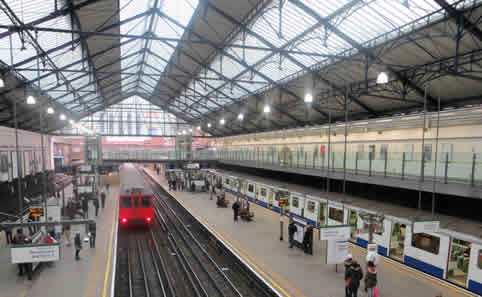
For the visitor to London the Underground or Tube will probably be the transport of choice to get around town. The Underground is normally the fastest way to get around town, often much faster than any taxi.
There is invariably an underground station nearby where you want to go and also your hotel and finding your way around the system is very easy.
There are currently 13 Underground lines, with the Elizabeth Line the latest, which opened in May 2022.
Journey planner Map DLR, overground & TfL Oyster card, contactless & Travelcards Night service Fares Concessions Child fares Group tickets Purchasing tickets Access

Key points about the London Underground
It is still encouraged to wear a facemask when using public transport in London, but it is no longer mandatory.
The authorities penalise you heavily for buying single journey tickets. In the centre you can pay more than double the price than if you used an Oyster Card for example.
A single journey on the London Underground can involve 1 or 2 changes of train. Your journey starts when you go through the ticket barrier of the station entrance you depart from and finishes when you pass through the ticket barrier at the exit of your destination. You cannot break a journey on a single fare, once you go though an exit barrier of a station that is journey completed.
The buses, Underground, DLR and London suburban trains are managed by a central government body called Transport for London (TfL) chaired by the Mayor of London. The transport passes that nearly everyone uses, Oyster and Travelcard, allow you to travel seamlessly across all modes of transport, bus, Underground, train and DLR using the same ticket/pass.
Children under 11 travel free on the London Underground and DLR (Docklands Light Railway) at all times. Child fares are available for those under 16 and it is possible to get discounted fares if you are under 18 or studying in London with an ID card.
There are no seniors fares for visitors. If you reside in London and are over 60 you can get a pass that makes free bus and Underground travel available. If you have an English National Concessionary bus pass you cannot use it on the London Underground (but you can use it on London's red buses).
The London Underground is closed from around midnight until around 5am, getting started a little later on Sundays. However on Friday and Saturday nights, much of the Underground runs through the night. In Central London there is a very good night bus network when the Underground is closed.
You will rarely have to wait more than 5 minutes for an Underground train at any time of the day.
London Journey Planner - for all types of transport across London
Use the TfL (Transport for London) journey planner to plan your travel. The journey planner covers all public transport.
TFL Journey planner

London Underground map
The London Underground map is a classic design that when first launched was immediately taken up worldwide for similar systems. The clarity, simplicity and ease of use compromises strict geographical accuracy.
The Circle line doesn't really go around in a squashed circle and it is not apparent for instance that Bayswater Underground is only 100 yards from Queensway.
In 2016 the Night Tube was introduced. On Friday and Saturday nights only Underground trains run through the night. For lines that operate a night service see the Night Tube map linked below or on the right-menu.
In May 2022 the long awaited Elizabeth Line opened its first section. The Elizabeth Line provides a route connecting East and West London. Find out more about the new Elizabeth Line .
Underground map Tube & rail map Night tube map
Docklands Light Railway (DLR), overground and TfL rail trains
To the east of London in the Docklands region you will see a region covered by something called the DLR (Docklands Light Railway). You can treat this network as just another Underground line.
Not in the centre of London, but in the suburbs you will find a train network called the Overground which can also be thought of as being part of the Underground for ticketing purposes.
Commuter trains into the suburbs are very confusing for the visitor. You can still use Oysters and Travelcards on these but those lines run by the national railways only give free travel to children under 5.
In the north and east of London most of these services are now run by TfL Rail or the Overground so free travel is available to children under 11, but to the south and west of London, services are still dominated by national railways companies.
The Tube and rail map usefully shows which railway stations are in which travel zones. Travel zones are the basis for fare charges on London's railways and Underground system.
London Underground Night Service - the Night Tube
In 2016 the London Underground began to introduce a full 24/7 service on Friday and Saturday nights only. Introduction has been on a phased basis.
Night Tube services are now running on the Central, Victoria, Jubilee line, Northern line (Charing Cross branch) and Piccadilly line (but not Acton to Uxbridge branch). The Night Tube will offer a 24-hour service on Fridays and Saturdays. Standard off-peak fares are levied for travelling on the Night Tube using Oyster and Contactless cards.
Travelcards are valid from the first day of issue (using the date printed on the card), and for journeys starting before 4.30am the following day. For example, if you buy a 1-day Travelcard at 11am on Friday, you can use it until 4.29 on the following Saturday.
Night Tube map - current lines operated
London Underground fares
The London public transport system is divided up into zones that radiate from the centre. Nearly all the hotels and the main sights are in Zone 1. Heathrow Airport is in Zone 6 and the furthest zone out is Zone 9.
The majority of visitors will only travel in the two most central zones 1 and 2. The Underground Map (link above) has the stations and their zones marked.
Some stations, such as Turnham Green, are in two zones. You use whichever zone for these stations is most beneficial in working out your fare.
Underground fares
You can see from the table below there is big financial incentive not to purchase individual tickets and use an Oyster card or Contactless payment card .
The other main way of paying is purchasing a Travelcard , which is a pass giving you unlimited travel for a set time period. The cost goes up with the coverage of zones required. The more zones you require the more expensive the Travelcard.
London Underground Fares from 3 March 2024 - March 2025
Oyster cards, contactless payment cards & travelcards.
As you can see from the above fare structure the authorities do not want you to buy single tickets, they want you to purchase one of the three payment options, Oyster cards, Contactless payment cards or Travelcards.
The Oyster card is a permanent reusable electronic ticket which is topped up from time to time by its owner. Londoners also have their season tickets loaded onto Oyster cards as well and there are passes for one weekly and monthly durations. All can be loaded onto the one electronic Oyster card.
Contactless cards are standard credit or debit cards that support the contactless payment technology, the total cost of all the journeys that you make in one day is calculated at the end of the day and a single charge is made to your Contactless payment card account.
Unlike the Oyster card the contactless facility has a 7-day cap as well as the Oyster daily cap used by Oyster.
You can use Oyster cards on all of London's public transport, not just the Underground, but buses, overground, DLR, suburban rail services and some river services.
Travelcards are another alternatives. Travelcards are valid on the same modes of transport but are unlimited travel passes for a fixed flat fee. Travelcards are available for 1 and 7 days, 1 month and 1 year durations.
You can purchase and subsequently top up Oyster cards and Travelcards from Underground stations and a wide variety of other outlets throughout London including neighbourhood stores, but not Contactless payment cards.
Oyster cards - more details
Contactless payment cards - more details
Travelcards - more details

Seniors concessions
There are no seniors fares for visitors. If you reside in London and are of pensionable age you can get a Freedom pass giving free travel. If you are 60+ and live in London the Seniors Oyster ID Card that makes free bus travel available. You can apply online or get a form from your local Post Office.
Anybody with an English National Concessionary bus pass can use that on London's red buses too and travel free of charge.
If you have a Senior Railcard you can get your 1/3 discount on off-peak Oyster fares. You have to ask a member of staff to load the concession on to a standard Oyster card (note, not a Visitor Oyster card) at an Underground station after showing your Seniors Card.
If you have a Senior Railcard you can also buy a 1 day off-peak zone 1-6 Travelcard at the discount applied.
Child concessions
This is a very complex subject and is covered in detail in the table below. Generally, a child is defined as under 16 years old, but in the last couple of years it has been possible to get child fares after jumping through a few hoops up to the age of 17.
Children under 11 can travel free on the London Underground, DLR and buses without a ticket. If a child is between 11 and 15 years old, you require an Oyster 11-15 Photocard (which has a fee, see below). This allows 11 to 15 year olds to travel at child fares on the Underground, DLR, Overground and some trains, free on the buses.
If you are a short-term visitor (in London for up to 14 days) with kids between 11-15 you can take advantage of the Young Visitor Discount. This means you can get half price fares on an Oyster card on a temporary basis for your child without going through the hoops and expense of getting an Oyster ID card. You do need to read carefully the rules of this scheme though.
Children's Fare Concessions
Group tickets - 1-day group travelcard for groups of 10 or more.
This ticket is for groups of 10 or more travelling together.
This in scope is the same as a 1-day off-peak Travelcard for zones 1-6 and 1-9 providing unlimited travel on all services after 9.30am Monday to Friday and all day Saturday, Sunday and Bank Holidays.
The pricing is particularly attractive if you have kids in the group and those staying in one of the outer zones, however if you are staying in the centre of London zones 1 to 3 it will be cheaper to purchase individual Oyster cards.
If you are a group of 10 or more then do check out this product.

Purchasing tickets & fares levied
There are no longer manned ticket offices at Underground and DLR stations. All tickets are dispensed by ticket machines in the ticket hall and there will be a member of staff hanging around these.
The same machines will allow you to top up your Oyster cards or see what the balance is on your Oyster card and they will also allow you to cancel your Oyster card and get your deposit and any cash left on the Oyster refunded.
If you prefer talking to people selling the tickets there are Oyster ticket stops. These are many of these and typically are convenience stores or news-stands that sell public transport tickets as a sideline. These outlets will have a sign in their front window.
The fare you pay is set by which zone your departure and destination stations are in. Your journey starts when you go through the ticket barrier of the station entrance you depart from and finishes when you pass through the ticket barrier at the exit of your destination. You cannot break a journey on a single fare, once you go though an exit barrier of a station that is your journey completed.
Access to platform & luggage
To gain access to the platforms, and again to exit a station you have to pass through automatic barriers (pictured). There is always one wide ticket barrier for wheelchairs, pushchairs and people with large suitcases.
If you have a single ticket, the barrier at your destination will not return your ticket. There is a manned side gate by the barriers. If you have a Travelcard you insert the Travelcard into the same slot as for the single tickets, the barrier will check that your Travelcard is valid for both date and zones travelled.
If you have an Oyster card or Contactless payment card you swipe the card over a bright yellow pad, the barrier will check validity and will record the station you have started your journey before opening the barrier. The barrier may display the balance on your Oyster too.
At your destination station, exiting through the barrier in effect tells the system you have ended your journey and it works out the fare to be deducted from your card.

BUY VISITOR OYSTER CARD & TRAVELCARD FOR LONDON
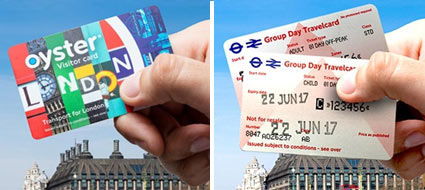
Visiting London? Save time and money on London public transport
• Visitor Oyster Card • Travelcard for 1 day anytime / off-peak or 7 days anytime • Group day travelcards available
LONDON TUBE MAPS (PDF)

London Underground 101: A guide to getting the Tube in London

Editor's Note
If you've never visited London before, navigating its iconic Tube system can be either an adventure or a confused mess of Tube lines, fare types and labyrinthian stations.
You might not have initially thought so, but there's a lot more to it than just getting to a station, hopping on a train and then exiting. Thankfully, TPG has your back, and we created this guide to the London Underground.
Let's dive in.
Related: The 23 best hotels in London
Paying for the Tube and how to save money
First of all, let's make sure the price is right.
There are many ways you can pay to travel around London via the Tube.
You can buy paper tickets from the ticket machines at each Tube, Overground and Docklands Light Railway station. One-way, return, daily and weekly travel cards are available. If you're buying tickets for single journeys, you'll probably spend more than you really need to if you take the Tube more than once.
The most convenient payment method, though, is to use your contactless payment card. Simply touch it on the yellow card readers found at Tube entrances and some platforms to pay for your ride.
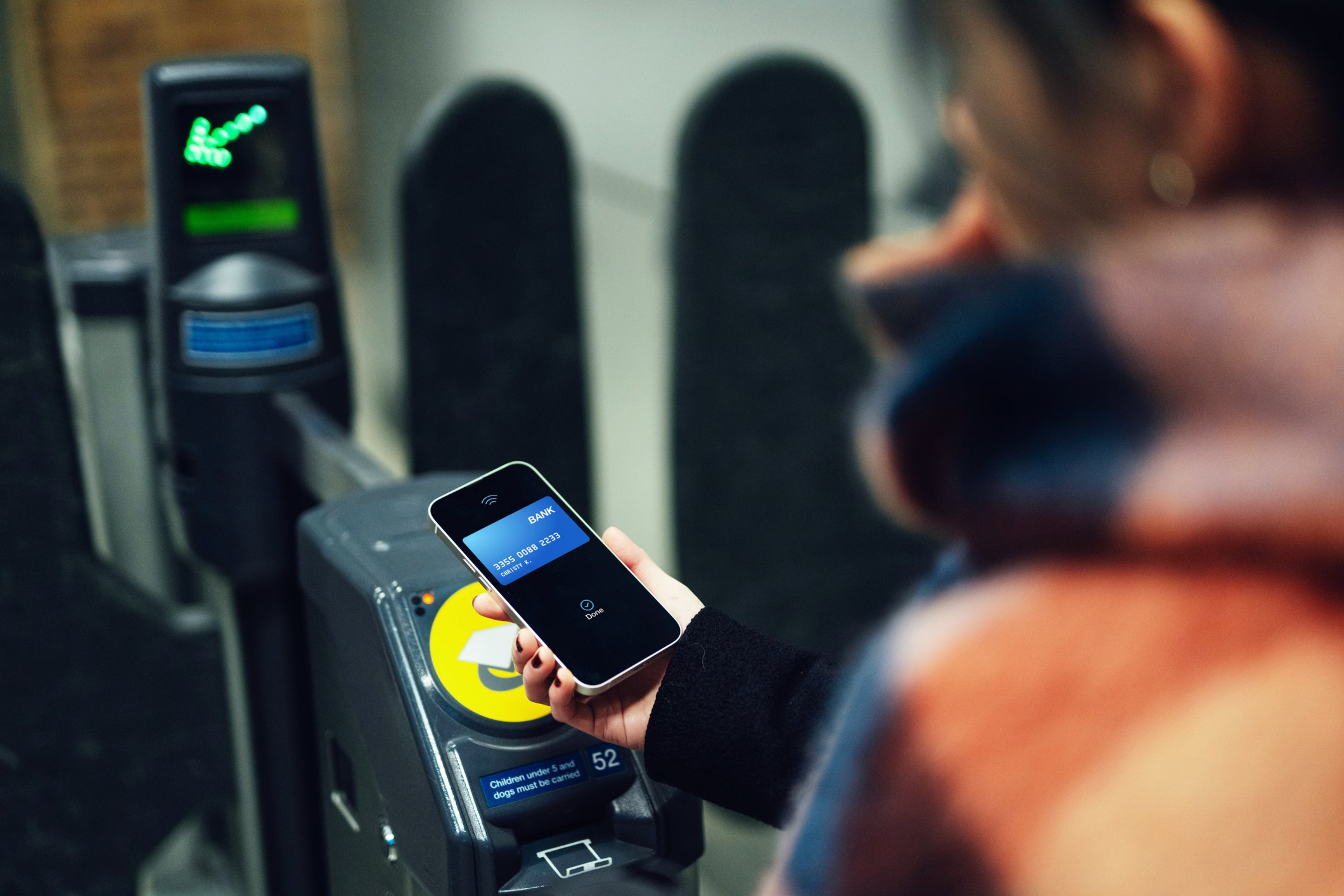
These card readers also work with prepaid Oyster cards sold at all Tube and Overground stations, plus most Elizabeth Line stations and select newsstands and visitor centers throughout London, for 7 British pounds ($8.86) each. If you choose to purchase and pay via an Oyster card, you can add money to the card using the ticket machines found inside Underground stations. You can then purchase daily or weekly travel cards covering various zones.
Regardless of how you pay for your ride, you'll use the same process for confirming your payment. Use your phone (for contactless payments) or debit, credit or Oyster card to tap in and out at the barriers of your start and end stations. Remember that card readers aren't always connected to gates and are sometimes free-standing, so make sure you locate one and tap in and out to avoid getting charged for traveling through all nine zones.
To see the full details and decide exactly which payment method is right for you, check out the Transport for London website .
Daily limits
If you use an Oyster card or contactless payment to pay for your Tube journey, there is a cap on how much you can be charged, depending on the zones you travel in or between.
Say, for example, you only travel within Zones 1 and 2. For a full day of travel via the London Underground in those two zones, you'll pay 8.50 pounds (around $10.76).
You can view the prices for other zones on the TfL website .
Child discounts
All children under the age of 11 can travel on the London Underground for free, and children between 11 and 15 receive discounted fares (as outlined below). To ensure that you get a discount, you should talk to a member of the London Underground staff inside the station.
How much does travel on the London Underground cost?
The London Underground operates a peak and off-peak fare system. The amount you're charged depends on which zones you're traveling in or between.
Peak fares are charged Monday to Friday between the hours of 6:30 and 9:30 a.m. and from 4 to 7 p.m. Off-peak fares are charged at all other times and if you're traveling from a station outside of Zone 1 into Zone 1 between 4 and 7 p.m. on weekdays.
Journeys on the Tube and the Elizabeth Line to and from Heathrow Airport (LHR) are always considered peak fares if you start, end or go through Zone 1.
Travel cards
Peak and off-peak travel cards are also available in the Tube stations' kiosks. The cost of travel cards varies depending on the zones you travel in. Paying with an Oyster card or via contactless payment is usually cheaper.
An Anytime Day travel card can be used for the entire day that you purchase it until 4:30 a.m. the next day.
An Off-peak Day travel card is valid for an entire weekday from 9:30 a.m. — or any time on Saturdays, Sundays and public holidays — until 4:30 a.m. the following day.
How to read the London Tube map
The London Underground map is divided into nine zones. The center of London — along with its most popular tourist attractions and iconic hotels — is in Zone 1. The outer parts of the city are in Zone 9. The zones are serviced by 11 tube lines and a handful of other rail services identified by color.
The London Underground lines are as follows:
- Bakerloo (brown) : From Harrow & Wealdstone in northwest London to Elephant & Castle south of the River Thames
- Central (red) : From West Ruislip in west London to Epping in east London
- Circle (yellow) : From Hammersmith to Edgware Road and then back to Edgware Road in a loop around central London
- District (green) : From Upminster in east London to Richmond in south London
- Hammersmith & City (pink) : From Hammersmith to Barking in east London
- Jubilee (gray) : From Stanmore to Stratford in east London
- Metropolitan (maroon) : From Aldgate to Amersham
- Northern (black) : From Edgware in the northern suburbs to South Wimbledon in southwest London
- Piccadilly (dark blue) : From Cockfosters via Hammersmith to Heathrow Terminals 1, 2, 3, 4 and 5; the Piccadilly Line has two branches, which split at Acton Town
- Victoria (light blue) : From Walthamstow Central in north London through central London to Brixton
- Waterloo & City (turquoise) : From Bank to Waterloo Station
Though not technically Tube lines, you'll also find the following rail routes on the Tube map:
- Overground (orange — double stripe) : From Watford Junction in the northwest to Croydon in the south and from Barking in the east of London to Richmond and Wandsworth in the southwest
- Docklands Light Railway (turquoise — double stripe) : From Bank in the City to Lewisham in east London and Bank to Woolwich Arsenal; there are further routes from Tower Gateway to Beckton, Stratford to Lewisham or Canary Wharf, and Stratford International to Woolwich Arsenal
- Elizabeth Line (purple — double stripe) : From Reading and Heathrow in the west to Shenfield and Abbey Wood in the east
Taking the Tube to Heathrow Airport
Depending on where you're traveling from, the Tube or Elizabeth Line will likely be your cheapest and most direct route to Heathrow Airport.
You can learn more about the best ways to reach Heathrow here .
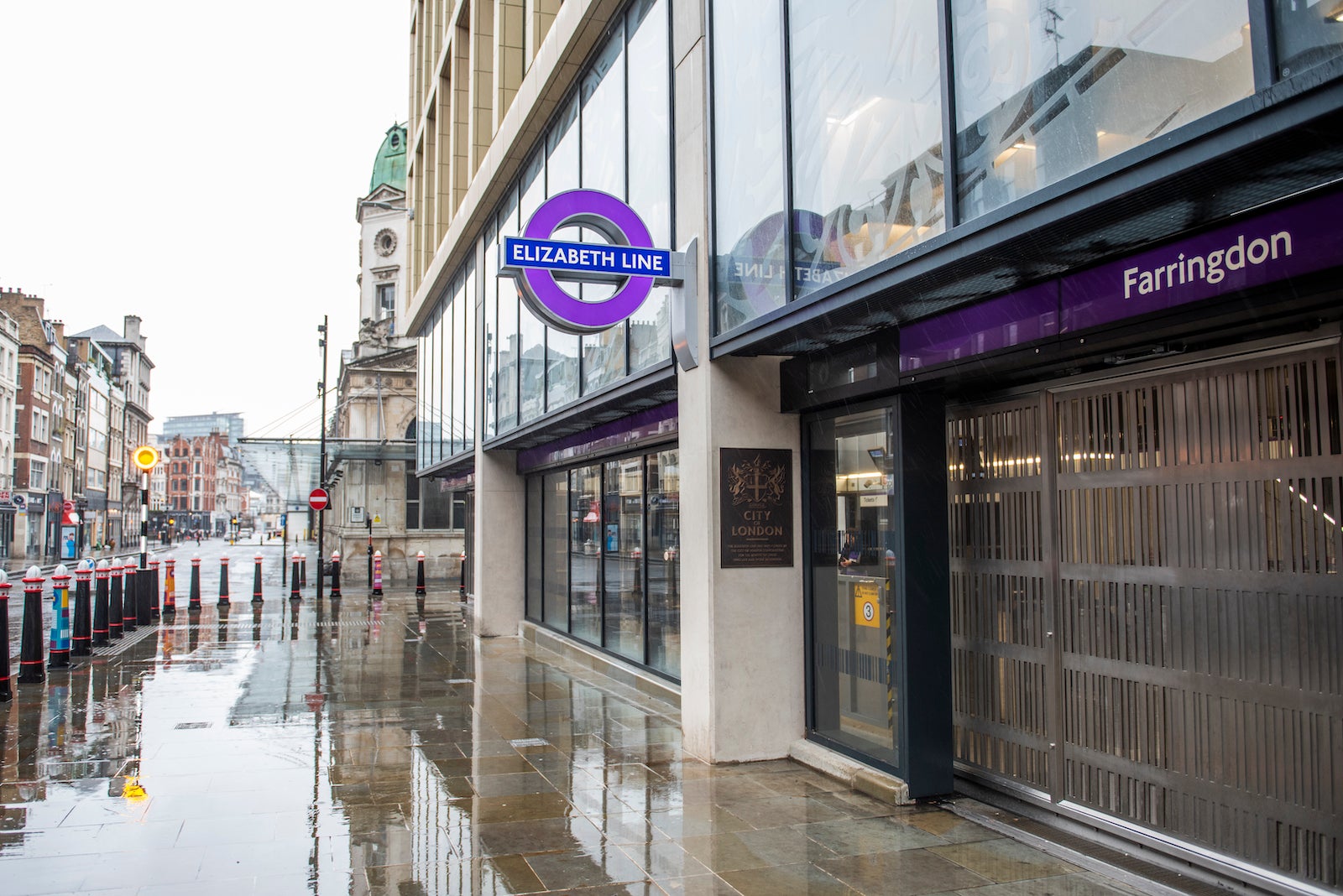
While there's extra space on the Piccadilly Line for suitcases, trains on other lines aren't always as accommodating. Either way, traveling with multiple pieces of luggage at peak times can make for a stressful and awkward journey for you and those around you.
It's not always possible to get to Heathrow without getting on the Tube during peak times. If possible, try to leave earlier to avoid rush hour and have a far more comfortable journey.
How to plan your trip
TfL provides a range of free Tube maps that are available in most Tube stations and some small shops to help you plan your journey.
You can also use TfL's journey planner . Add in your start and end destinations, and the site will work out the nearest Tube stations and what changes you may need to take. The site will also suggest bus routes if they're faster, and it'll advise on journey times.
You can filter its suggestions to only include buses if you wish to avoid the Tube; you can also filter for routes that are accessible, routes near taxi ranks or routes that have the fewest changes or least amount of walking.
In terms of apps, many Londoners tend to use Citymapper ( iOS / Android ) or Google Maps ( iOS / Android ), both of which will provide you with up-to-date Tube suggestions, walking routes and bus options.
How early does the Tube run?
The London Underground's opening times can differ depending on the line you want to take and where you're starting your trip. Generally, though, Tube trains begin operation around 5 a.m. from Monday to Saturday, with slightly reduced operating hours on Sundays.
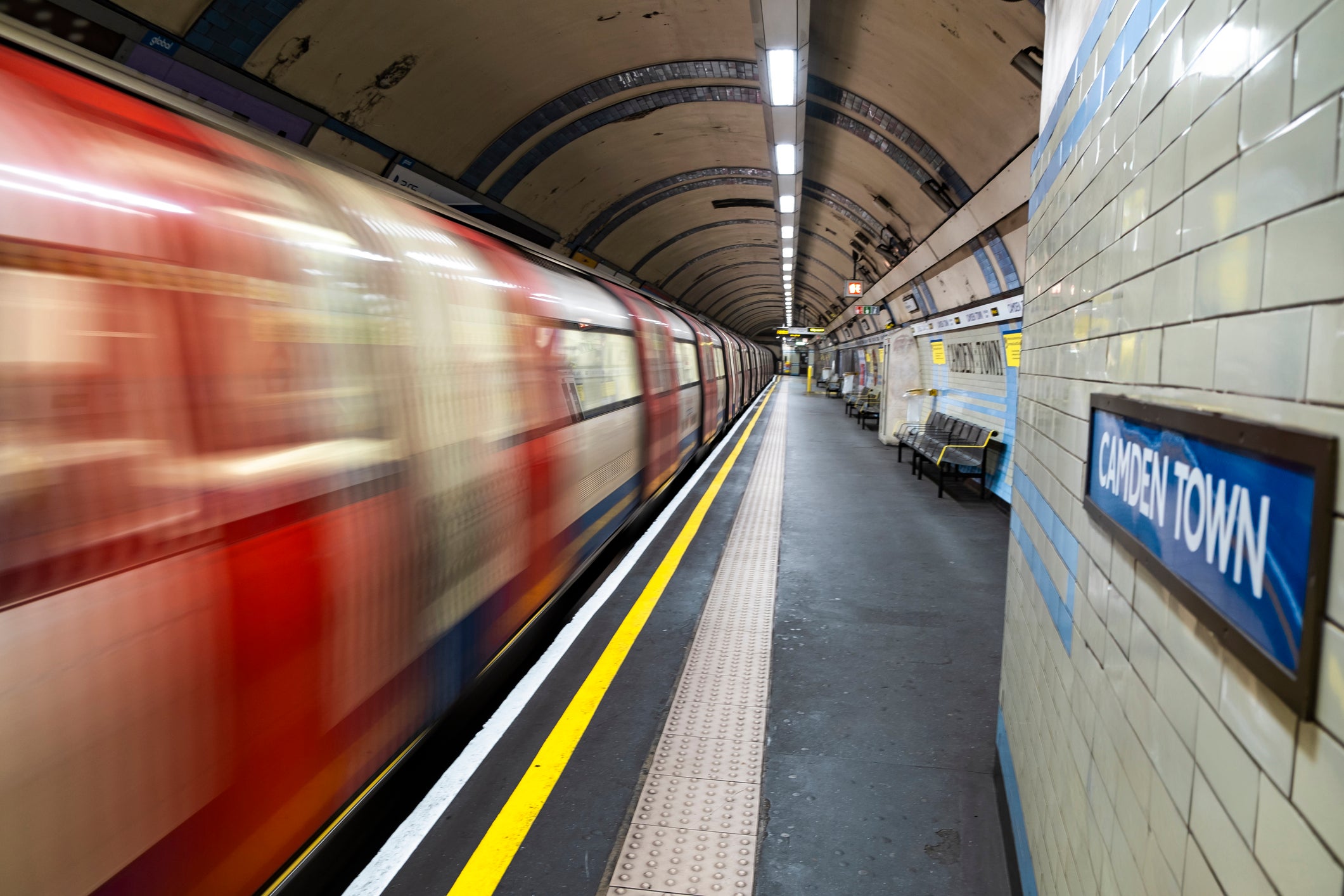
How late does the Night Tube run?
On Friday and Saturday nights, you can ride the Night Tube when the Central, Jubilee, Northern, Piccadilly and Victoria lines run for 24 hours. Additionally, the London Overground operates a 24-hour service on these days between New Cross Gate and Highbury & Islington.
The Night Tube is charged at off-peak rates.
The quickest route might not be the obvious one
If you're not used to London, you might think you need to take the Tube to get anywhere. The Tube is your best bet for longer journeys in and out of the city. However, shorter journeys in central London will likely be quicker on foot.
When planning your journeys, the TfL website has a handy box to help you determine which routes are quicker to walk.
By walking shorter routes, you'll not only save time but will also breathe in less thick, soupy air. The views are guaranteed to be an improvement, too.
Travel etiquette on the London Underground
Polite behavior when traveling on the London Underground can pretty much be simplified into three main rules.
Escalator etiquette
Perhaps the most important rule of Tube stations is to stand on the right on the escalators. This allows those in a rush to glide down the escalators in a flash to avoid waiting an extra minute for the next train.
Mindful Tubing
Everyone getting the Tube has somewhere to be and is likely in a rush. Letting all passengers get off your carriage before boarding will enable a smoother, quicker and more pleasant journey for everyone.
Additionally, don't hog seats if someone in need, such as elderly people, pregnant women or people with disabilities, would benefit more than you by sitting down. Checking if someone needs your seat will go a long way in making someone's journey, if not their entire day, better.
As for rides during busy commuting hours, remember that squishing as tightly as possible into the area closest to the doors doesn't benefit anyone. Move down the train. It makes for a more comfortable, less sweaty journey for everyone.
In general, queueing is somewhat of a national sport for Brits. We do it anywhere and everywhere, and anyone who fails to queue correctly will receive passive-aggressive eye rolls and tuts from all who witness it.
This also applies to the Tube, whether you're waiting to get through the barriers, waiting to get on or waiting for the stairs, escalators or elevators to leave the station. Save yourself the glares and cranky tuts of fellow passengers by falling into line.
Bottom line
Love it or hate it, London would come to a standstill without the Tube. Whether it's your first time in the capital or you're a seasoned Londoner, the above tips will serve you well. Remember, above all else, to stand to the right.

- Places to Visit
- Sightseeing
- Practical Tips
- Where to Stay
London Underground Tickets & Travelcards
The Travelcard is a transport pass for London that gives you unlimited travel in London within certain zones . The prices vary according to the number of zones you need to travel through. Central London is in zone 1.
Travelcards are valid for 1 day, 7 days, 1 month or 1 year.
The passes are valid for travel on all types of transport in London including:
- the Underground (the tube)
- the local suburban trains within London
- the Elizabeth Line (not west of West Drayton)
- the Docklands Light Railway (DLR)
- the London Overground
- the buses all over London. A Travelcard for any zone allows you to use the buses in all zones (zones 1-6)
The 3 Day Travelcard, weekend Travelcard, Zone 1-2 & 2-6 One Day Travelcards are no longer available.
Visiting London for 1-7 days? See our guide to London’s transport tickets & passes . The Travelcard may not be the best ticket for your stay.
Single Underground Tickets
Single paper tickets on the London underground are expensive if you buy them from a tube station ticket machine:
- £6.70 for one journey in zone 1 (central London) and between zone 1 and zones 2 to 6
- See single ticket prices for all zones .
One Day Travelcards: 2024 prices
Using a Pay as you go Oyster card or a contactless card are the cheapest ways to pay for travel if you’re in London for 1-5 days. The daily cap is £8.50 per day for zones 1-2
If you really don’t want to use an Oyster card or don’t have a contactless card, the One Day Travelcard is the next best money-saving pass.
The paper Off peak One Day Travelcard for zone 1-6 is £15.90. This is expensive, but still cheaper than paying the full cash fare for 3 underground trips in central London (3 x £6.70 = £20.10 ).
One Day Travelcard fares 2024
Peak v anytime travelcards.
One Day Travelcard prices are different if you travel during peak or off-peak times:
Anytime Travelcard Valid for travel at anytime. Off-Peak Travelcard For travel after 9.30am Monday–Friday and all day Saturday, Sunday and public holidays.
Top Tip: An Off-Peak One Day Travelcard for zones 1–6 costs £10.40 with a Railcard .
Weekly Travelcards: 2024 prices
If you stay in London for 6–7 days and use the underground, trains, and buses every day, the weekly Travelcard is the most cost-effective travel pass.
The one-week pass including central London (zones 1-2) is £42.70.
- It can start on any day of the week
- It’s valid for travel at anytime; there is no peak or off-peak rate.
Most places sell weekly Travelcards loaded onto a plastic Oyster card. There’s a £7 fee for the Oyster card.
Your fare on an Oyster card will automatically cap at the weekly Travelcard fare (this is already available on contactless cards). The cap starts on Monday and ends Sunday, so it mainly benefits Londoners or those working in London.
Weekly Travelcard fares 2024
- See weekly Travelcards prices for all other zones (2, 3, 4, 5 and 6)
Monthly Travelcards: 2024 prices
For longer stays in London, monthly Travelcards are available. You won’t save much compared to buying 4 x weekly Travelcards – but you’ll save time renewing it. Like the weekly Travelcard, it can start on any day of the week and is valid for travel at any time. See monthly Travelcard prices for all other zones (2, 3, 4, 5 and 6)
Monthly Travelcards 2024
Where to buy travelcards.
One day, weekly and monthly Travelcards are available from:
Underground stations
Travelcards are available from all underground station ticket machines (there are no longer any underground tickets offices). The busier stations in central London have staff to help you use the machines.
Local shops and newsagents
Travelcards are also available from Oyster ticket stops . These are newsagents and local shops licensed to sell London transport tickets and Oyster cards. One Day Travelcards are not available from Oyster ticket stops.
London train stations
One Day Travelcards are available from all London train station ticket offices and ticket macines. Paper weekly and monthly Travelcards are no longer available from train stations . They are available to buy, but they are loaded onto an Oyster card and may only be available from ticket machines, not ticket offices.
London Transport Visitor Centres
TfL Visitor Centres at Victoria train station, Kings Cross/St Pancras International station, Heathrow Terminal 2 & 3 tube staion, Liverpool St station & Piccadilly Circus tube station.
How to use a Travelcard
On the underground.
If you have a paper One Day Travelcard or single ticket from a ticket machine, insert the card into the slot on the front of the ticket barrier. The barrier opens when you take the ticket from behind the yellow reader, on the top.
If you have a paper One Day Travelcard, just show it to the driver when boarding the bus.
See How to use an Oyster card if you have a weekly Travelcard on an Oyster card.
Top Tip: Do you want a cheaper way to travel around central London? If you only travel by bus , it costs £5.25 per day or £24.70 per week.

Related pages
- Guide to London’s transport tickets
- Weekly and monthly Travelcards for zones 2, 3, 4, 5 & 6
- Oyster card
- How to use a contactless card to pay for transport
- Bus tickets & passes
- London Transport zones
Last updated: 22 February 2024
Transport tickets & passes
- Guide to London's transport tickets
- One day & weekly Travelcards
- Zone 2–6 weekly Travelcards
- Bus tickets & passes
- Oyster single tickets
- Oyster card refunds
- Contactless cards
- Child tickets & passes
- Local train tickets
Useful information
- Plan your journey
- London transport zones
Popular pages
- Left luggage offices
- Congestion Charge
- 2 for 1 discounts at London attractions
- Oyster cards
- Top free museums & galleries
- Cheap eating tips
- Heathrow to London by underground
Copyright 2010-2024 toptiplondon.com. All rights reserved. Contact us | Disclaimer | Privacy
Subscribe to Updates
Get the latest creative news from FooBar about art, design and business.
By signing up, you agree to the our terms and our Privacy Policy agreement.
Manchester United vs Newcastle United : Premier League
Málaga cf’s standings: navigating challenges, the renaissance of losc lille: a tale of triumph, navigating london’s underground understanding the cost of the tube.
London’s iconic Tube, an intricate web of tunnels and trains, whisks you across the city with unmatched efficiency. But how much does this subterranean adventure cost? Fear not, budget travelers! This comprehensive guide delves into everything you need to know about navigating the London Underground’s fare system, uncovering hidden savings, and maximizing your journey without breaking the bank.
The London Underground, affectionately known as the Tube, serves as the lifeline of the bustling metropolis, ferrying millions of commuters and tourists across the city each day. As one of the world’s oldest and most extensive urban transit systems, the Tube offers convenience, efficiency, and affordability. However, for those unfamiliar with its fare structure, understanding how much the London Tube costs can be a bit daunting. In this comprehensive guide, we’ll break down the various factors that influence the cost of using the Tube, from single fares to travel passes and discounts.
Fare Fundamentals: Understanding Your Options
Standard Tickets:
Adult (16+) :
Online : £28.20 per single journey (Zone 1 fare)
At the gate : £30.00 per single journey (Zone 1 fare)
Peak vs. Off-peak : Fares are higher during peak times (Mon-Fri 6:30-9:30am & 4-7pm).
Child (3-15) :
Online : £20.60 per single journey (Zone 1 fare)
At the gate : £22.00 per single journey (Zone 1 fare)
Under 3s : Travel free
Flexi Tickets:
Adult (16+) : £24.00 per journey (valid for one day)
Child (3-15) : £17.50 per journey (valid for one day)
Offer greater flexibility within a specific zone.
Oyster Card:
Reusable contactless payment card.
Discounted fares compared to single tickets (pay as you go).
Daily and weekly caps limit your spending within a zone.
Top-up online or at stations.
Travelcard:
Pre-paid pass valid for unlimited travel within chosen zones and timeframes.
Offers significant savings compared to single tickets, especially for multiple journeys.
Different types available, including Day Travelcards, Weekly Travelcards, and monthly options.
Online pre-booking for standard tickets and Travelcards often offers cheaper fares.
Consider travel zones – fares increase with the number of zones covered.
Download the TfL Go app for easy Oyster card management and journey planning.
Always check the official Transport for London (TfL) website for the latest fare information and offers: https://tfl.gov.uk/fares/
Unveiling Hidden Gems: Cost-Saving Strategies
Navigating the Tube doesn’t have to drain your wallet. Here are some insider tips to unlock
Plan your travel zones : Only pay for the zones you need to access. Consider walking or alternative transport for short journeys outside your chosen zone.
Embrace off-peak travel : Enjoy lower fares by traveling during off-peak hours (before 6:30am and after 9:30am, weekends, and public holidays).
Group travel discounts : Groups of 15 or more qualify for discounted Travelcards.
Utilize special offers : TfL frequently offers seasonal promotions and discounts, so keep an eye out!
Consider alternative travel methods : Explore options like buses, trams, or cycling for shorter distances, offering more flexibility and potentially lower costs.
Free walking tours : Combine sightseeing with budget-friendly exploration by joining free walking tours offered in various areas of London.
Beyond the Fare : Unveiling the Value
Standard Cash Fare
For occasional travelers or those without an Oyster card or contactless payment method, purchasing a standard cash fare ticket is the simplest option. The cost of a single journey on the Tube varies depending on the zones traveled and the time of day. As of the latest information available, a single fare for a journey within Zone 1 (central London) typically ranges from £2.40 to £4.90 for adults and £1.50 to £2.40 for children aged 11-15.
Peak vs. Off-Peak Fares
The London Underground operates peak and off-peak fare structures, with peak hours typically occurring during weekday mornings and evenings. Traveling during off-peak hours can result in lower fares, making it a more budget-friendly option for leisure travelers or those with flexible schedules. Off-peak fares are typically available on weekdays after 9:30 am and all day on weekends and public holidays.
Oyster Card
An Oyster card is a reusable smart card that offers discounted fares on the London Underground, buses, trams, Docklands Light Railway (DLR), London Overground, and some National Rail services. Travelers can load pay-as-you-go credit onto their Oyster card and use it to tap in and out of Tube stations, automatically deducting the appropriate fare for each journey. Oyster card fares are typically cheaper than standard cash fares, with adult fares starting at £2.40 for journeys within Zone 1 during off-peak hours.
Contactless Payment
In addition to Oyster cards, passengers can also use contactless payment methods such as debit or credit cards to pay for Tube journeys. Contactless payment offers the same fare discounts as Oyster cards, providing a convenient and hassle-free alternative for travelers without an Oyster card. Contactless payment also eliminates the need to top up credit, as fares are charged directly to the linked payment card.
Travelcards
For visitors or frequent travelers planning to use public transportation extensively during their stay in London, purchasing a Travelcard may offer the best value. Travelcards provide unlimited travel on the London Underground, buses, trams, DLR, London Overground, and some National Rail services within specified zones and validity periods. Travelcards are available for different durations, ranging from one day to one week or longer, with prices varying depending on the zones covered.
Day Travelcards
Day Travelcards are a popular option for tourists looking to explore London’s attractions without the hassle of purchasing individual tickets for each journey. Available for unlimited travel within specified zones for a single day, Day Travelcards offer flexibility and convenience at a fixed price. Prices for Day Travelcards start at £13.10 for travel within Zones 1-4 for adults and £6.60 for children aged 11-15, with discounts available for Railcard holders and groups.
Children under the age of 11 travel free on the London Underground and other TfL services when accompanied by a fare-paying adult. Children aged 11-15 are eligible for discounted fares on single journeys, Travelcards, and Day Travelcards. Additionally, young people aged 16-17 can apply for a 16-17 Saver railcard, offering discounted fares on Tube and rail travel throughout the UK.
Seniors and Disabled Passengers
Seniors aged 60 and over are eligible for free or discounted travel on the London Underground and other TfL services with a Freedom Pass or an Older Person’s Freedom Pass. Disabled passengers can apply for a Disabled Persons Railcard or a Disabled Persons Freedom Pass, providing discounted or free travel on Tube and rail services.
While fares are an important consideration, remember the immense value the Tube offers:
Unmatched city access : Connect to iconic landmarks, hidden gems, and diverse neighborhoods across London with ease.
Reliable and efficient : Avoid traffic congestion and navigate quickly during peak hours.
Safe and comfortable : Enjoy a clean and well-maintained network with security measures in place.
A cultural experience : Immerse yourself in London’s vibrant energy and diverse ridership.
Q: Is the London Underground open year-round?
A: Yes, the network operates 24/7 except for Christmas Day.
Q: Is there a discount for students or seniors?
A: Unfortunately, there are no specific discounts for standard tickets. However, students and seniors might benefit from memberships, special offers, or Travelcards depending on their travel needs.
Q: Can I use contactless payment on the Tube?
A: Yes, contactless bank cards and Oyster cards are accepted for travel.
Q: What is the best way to get to the London Underground?
A: Many stations are centrally located and easily accessible by bus, tram, or even walking. Public transport journey planners
The cost of traveling on the London Underground can vary depending on factors such as fare type, travel method, and eligibility for discounts or concessions. By understanding the various fare options available, passengers can navigate the Tube with confidence and choose the most cost-effective option for their travel needs. Whether it’s a single journey, a day of sightseeing, or an extended stay in London, the Tube offers a convenient and affordable way to explore the city’s diverse neighborhoods, attractions, and cultural landmarks.
To read more, Click Here
Related Posts
The batman tops uk box office: strong start for dc’s latest superhero film, uk businesses for recession: sustained resilience & growth, green energy sector sees record investment in the uk, amazon faces mounting scrutiny from uk regulators, uefa champions league pot 3: 2023/24 season analysis, sheffield wednesday in the throes of transfer battle, leave a reply cancel reply.
Save my name, email, and website in this browser for the next time I comment.
Type above and press Enter to search. Press Esc to cancel.
- Visit London >
- Getting Around London >
London Tube Fare Calculator
This London tube fare calculator will instantly tell you how much a journey on the London underground will cost between two stations. Remember that the cheapest way of getting around London is with a contactless payment or an oyster card, and ticket prices depend on how many zones you travel through.
more things to do

25 Things to do in London

Where to Stay in London - Best Areas in London
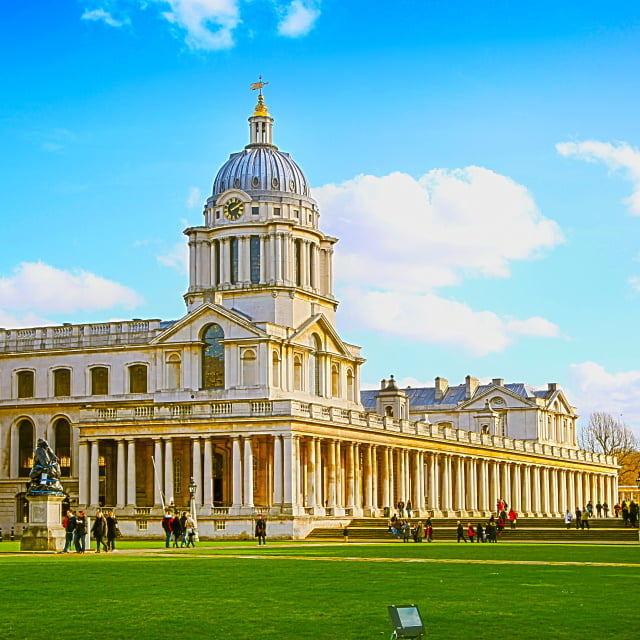
How Many Days Should You Spend in London?
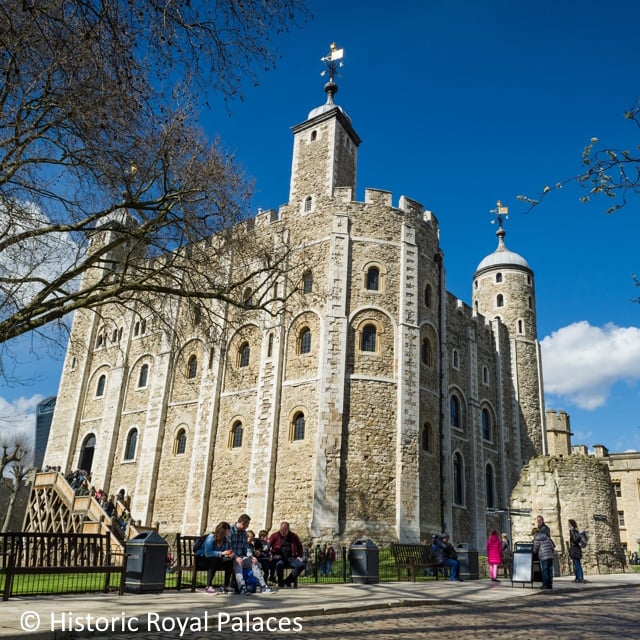
The 10 Best London Tours 2024
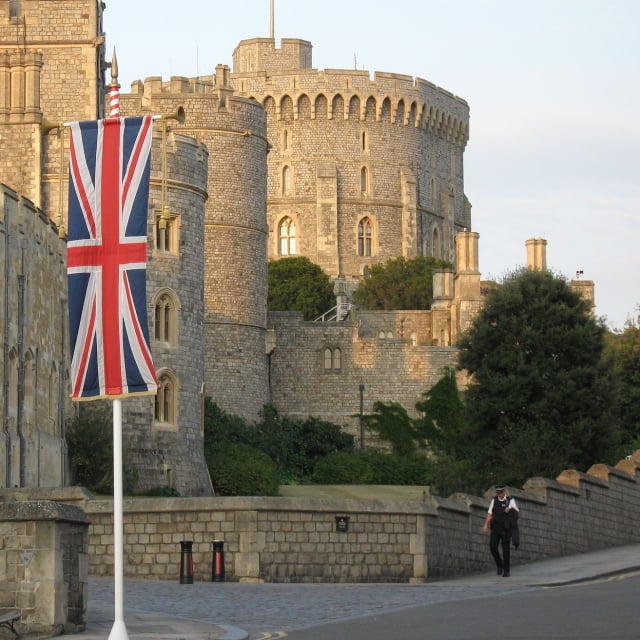
5 Places to Visit Outside of London
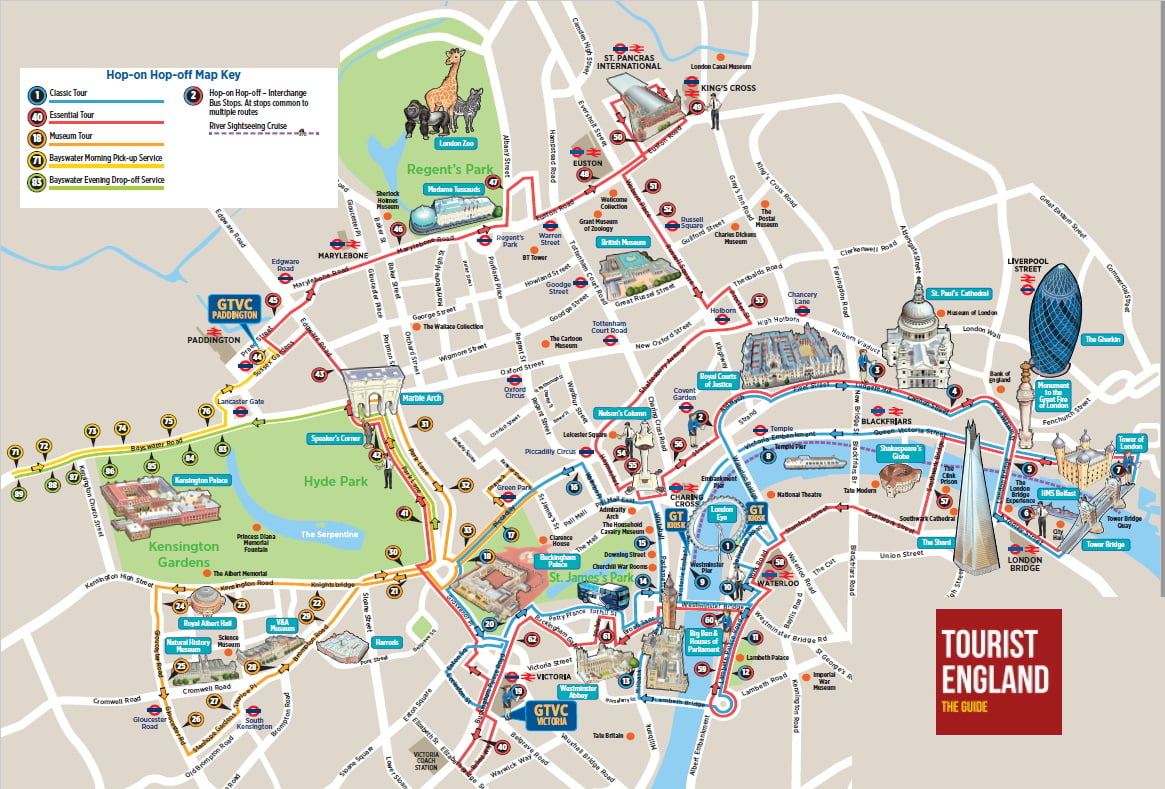
London Hop on Hop off Bus Routes & Cruise Route
NEWS... BUT NOT AS YOU KNOW IT
London Travel updates: Bakerloo, Jubilee, DLR and London Overground hit by closures and severe delays

Share this with

Passengers have been hit by travel chaos after parts of the London Underground and Overground have been shut.
A wave of disruption has hit travel on the Transport for London network ahead of rush hour today.
Multiple lines through central London have been partially suspended and others are experiencing severe delays, TfL warned.
Part of the Jubilee line and the London Overground is suspended.
There is no service between London’s busiest station Waterloo and Wembley Park, and severe delays on rest of the Jubilee line while engineers fix a signal failure at Willesden Green.
London Overground service is halted between Barking and Barking Riverside due to another signal failure at Walthamstow Queen’s Road and there are severe delays on the rest of the line.
Bakerloo line has severe delays due to an earlier fire alert at Queen’s Park and a points failure at Lambeth North.
Docklands Light Railway (DLR) has severe delays between Canary Wharf and Stratford because of a faulty train at Bow Church.
Central line has some minor delays between Leytonstone and Hainault in east London due to train cancellations.
The disruption comes just hours before the kick off of the England vs Slovenia Euro 2024 football game at 8pm.
Affected lines
Here are all the service hit by disruption today on the Transport for London network.
Bakerloo line – severe delays
Severe delays due to an earlier fire alert at Queen’s Park and a points failure at Lambeth North. Tickets are being accepted on London Buses.
Central line – minor delays
Minor delays between Leytonstone and Hainault due to train cancellations. Good service on rest of the line.
DLR -minor delays
Minor delays between Canary Wharf and Stratford due to an earlier faulty train at Bow Church. Good service otherwise.
Jubilee – part suspended and severe delays
No service between Waterloo and Wembley Park and severe delays on the rest of the line while a signal failure is fixed at Willesden Green.
Tickets are being accepted on London Overground, DLR, Elizabeth line, C2C, Southeastern, Thameslink and Buses via any reasonable route.
London Overground – part suspended and severe delays
No service between Barking and Barking Riverside due signal failure at Walthamstow Queen’s Road.
Severe delays on the rest of the line.
Tickets are being accepted on Buses and London Underground via any reasonable route.
Have you been affected by the disruption? Please email [email protected].
Get in touch with our news team by emailing us at [email protected] .
For more stories like this, check our news page .
MORE : I was attacked on the Tube – why did nobody come to help me?
MORE : This ‘rare’ private island could be yours for less than £100,000 — and it’s not far from London
MORE : Child falls onto track and is saved by stranger as train pulls into station
Sign Up for News Updates
Get your need-to-know latest news, feel-good stories, analysis and more.
Privacy Policy

Get us in your feed


COMMENTS
On Tube, DLR, London Overground, Elizabeth line and National Rail services in London: Peak fares - Monday to Friday (not on public holidays) between 06:30 and 09:30, and between 16:00 and 19:00. Off-peak fares - at all other times and if you travel from a station outside Zone 1 to a station in Zone 1 between 16:00 and 19:00, Monday to Friday.
How much it costs and how to pay to travel around London. Find out what's the best ticket for you and how to use contactless and Oyster cards, view fares, check if you can get a refund or replacement and see if you're eligible for free and discounted travel.
Single fare finder. Find the cost of a journey between any two stations on Tube, DLR, London Overground, Elizabeth line and National Rail services where pay as you go (contactless or Oyster) is accepted. Fares between two stations may vary depending on the direction of travel, time of day and day of the week. Single fare finder only shows the ...
If you travel during peak hours, costs will be more expensive than during off-peak hours. Peak hours are Monday to Friday, between 6:30 am to 9:30 am, and between 4:00 pm to 7:00 pm, except on public holidays. Ticket type: Paper ticket or cash ticket: Single tickets cost between £6.70 and £9.80.
Adult rate prices 2024. Adult rate prices 2024. The caps below apply to all Tube, DLR, Elizabeth line and London Overground services, and most National Rail services in Zones 1-9*. * Journeys on Southeastern high-speed trains and Heathrow Express services are not included in caps and Travelcards. Zone Pay as you go caps. Travelcards. Daily peak.
Overall fare. £0.00. Book train & bus tickets to London. Find fares for tube, rail and bus journeys in London. Calculate Oyster card fare costs on the London Underground, DLR, TfL Rail and National Rail train services.
Daily Anytime Daily Off-peak Monday to Sunday (contactless only) Monthly Annual Zone Pay as you go Travelcards Caps Day Anytime Day Off-peak 7 Day Zone 6 only £13.20 £13.20 £27.00 £19.10 £13.50 £27.00 £103.70 £1,080
The transport passes that nearly everyone uses, Oyster and Travelcard, allow you to travel seamlessly across all modes of transport, bus, Underground, train and DLR using the same ticket/pass. Children under 11 travel free on the London Underground and DLR (Docklands Light Railway) at all times. Child fares are available for those under 16 and ...
Cost of pay-as-you-go Tube journeys within zone one will go up by 10p to £2.50. Bus trips to increase by 10p to £1.65 (the Hopper fare allows multiple journeys within the hour) Daily cap on ...
If you use an Oyster card or contactless payment to pay for your Tube journey, there is a cap on how much you can be charged, depending on the zones you travel in or between. Say, for example, you only travel within Zones 1 and 2. For a full day of travel via the London Underground in those two zones, you'll pay 8.50 pounds (around $10.76).
The London Underground network is divided into nine zones. Central London is covered by Zone 1. The Tube network has 11 lines. The Tube fare depends on how far you travel, the time of day, and what type of ticket or payment method you use. Oyster cards or contactless payments are the cheapest ways to pay for Tube journeys.
Find fares for Tube, DLR, London Overground, Elizabeth line and most National Rail services ... Find the cost of a single journey between two stations. ... Tube and rail fares. Prices for pay as you go, caps and Travelcards when you travel on Tube and rail. River fares. Prices for pay as you go and tickets when you travel on River services. Bus ...
Buses cost just £1.75 for unlimited journeys within a hour and adult off-peak pay as you go fares into Central London start from £2.70. ... London. London Day Travelcard. Enjoy unlimited travel on London's public transport, including bus, Tube, tram, DLR, London Overground, Elizabeth line and National Rail services in zones 1-6. tagged with ...
For travel in zone 1-2: Single tickets on the underground cost £2.80 with an Oyster card/contactless card. If you buy a ticket from a ticket machine, the full cash fare is £6.70. If you use your card to pay for transport in central London for the whole day, the 'daily cap' - the maximum amount deducted is £8.50.
Top Tip: An Off-Peak One Day Travelcard for zones 1-6 costs £10.40 with a Railcard. Weekly Travelcards: 2024 prices. If you stay in London for 6-7 days and use the underground, trains, and buses every day, the weekly Travelcard is the most cost-effective travel pass. The one-week pass including central London (zones 1-2) is £42.70.
Sample fares: Zones 1 to 2: £3.40 Peak. £2.80 Off-Peak. Single bus journey - £1.75. Unlimited journeys in one day in zones 1 and 2 - £8.10. Zones 1 to 6: £5.60 Peak and Off-Peak. You can top up your Oyster card at Tube stations and over 4,000 Oyster Ticket Stops throughout London and at London Visitor Centres.
The cost of a single journey on the Tube varies depending on the zones traveled and the time of day. As of the latest information available, a single fare for a journey within Zone 1 (central London) typically ranges from £2.40 to £4.90 for adults and £1.50 to £2.40 for children aged 11-15.
Read our guide to the London Tube, Subway, Taxis, Buses and Trains. London Perfect - London Vacation Rentals. ... It does cost extra to buy tickets on the day, so if you know when you want to travel we recommend you buy in advance. ... Get Ready for 24 Hour Tube Travel in London. Big news! Later this year the London Tube will have 24 hour ...
London Tube Fare Calculator. This London tube fare calculator will instantly tell you how much a journey on the London underground will cost between two stations. Remember that the cheapest way of getting around London is with a contactless payment or an oyster card, and ticket prices depend on how many zones you travel through.
Adult Zones 1-3. £47.90. Adult Zones 1-4. £58.50. Adult Zones 1-5. £69.60. Adult Zones 1-6. £74.40. *The above prices are controlled by TFL and are subject to change.
Take a Stroll Along the Embankment. Discover London's Embankment for a cost-free afternoon. Hop on the tube to the Embankment station and wander along the River Thames, soaking in panoramic views of iconic landmarks such as the London Eye.For a unique viewing point, visit the top floor of One New Change, and enjoy free views of St. Paul's Cathedral from its roof terrace.
Compare caps and Travelcard prices for your travel. The zones you choose must include all the zones you'll travel through. For a specific journey use Single Fare Finder . Information for... Covers Travelcards and Cap fares for Tube, DLR, London Overground, Elizabeth line and most National Rail services.
Frozen Tube, DLR, London Overground and Elizabeth line fares. Most adult pay as you go fares will be frozen; The adult peak pay as you go fare for a journey in Zone 1 will be frozen at £2.80; The adult off-peak pay as you go fare for a journey in Zone 1 will be frozen at £2.70
London Travel updates: Bakerloo, Jubilee, DLR and London Overground hit by closures and severe delays Noora Mykkanen Published Jun 25, 2024, 4:19pm | Updated Jun 25, 2024, 6:08pm
London Pride is occupying the city centre on Saturday, June 29, and while there will be a boatload of rainbow-coloured fun there will also be significant disruption to travel. Pride in London 2023 attracted 1.5 million spectators and broke the all-time record and there could be a brand new record set this year.
Travelcards. A Travelcard (in the zones it's valid for) gives you unlimited travel at any time on bus, Tube, Tram, DLR, London Overground, Elizabeth line and National Rail services in London. You can use it on all buses, and if valid in zones 3, 4, 5 or 6, on all trams. Travelcards can start on any day.